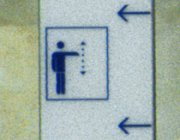Accessibility Legend [Alt/0] Access Keys (Instructions)
I am committed to ensure accessibility to all users, and the web site conforms to many of the existing recommendations and standards. If you encounter a problem accessing my site, or if you have questions about other issues or would like to provide feedback, feel free to e-mail me!
Access Keys
There is a global access key set on this site, available for people using various assistive technologies as well as users of ordinary browsers.
Access key strokes consist of alt plus the access key on Windows machines and Control/Ctrl plus the access key on Macs. Windows users need to hit 'Enter' to follow access key links, but the Mac access keys follow links automatically.
Access keys are defined as follows:
Access key 1: "Home page" links to the homepage of English section
Access key 3: "Index" links to the Sitemap, Table of Content/ToC, the overview of pages in English
Access key 4: "Search" links to the search engine, which also looks into the meta tags
Access key 6: "Help" links to the Guide and Help page
Access key 0: "Accessibility" links to this Accessibility Legend for this web site (which is the page you're reading right now)
Access key C: "Contact" links to Address and Contact Information
In addition accesskeys N (for next) and P (for previous) are used in the news section, which eases reading and navigation through the blog pages.
Most pages have the following links to aid navigation in text-only browsers or other assistive technologies:
- rel=up (which will take you one level up in the hierarchy or sitemap tree)
- rel=first
- rel=start
- In the resume section you may also use: rel=previous
- In the resume pages you may also use: rel=next
- rel=last
- rel=home
- rel=index
- rel=ToC
- rel=help
- rel=accessibility
- rel=copyright
- rel=contact
- rel=last
- rel=search
Netscape 6+ and Mozilla users can take advantage of this feature by selecting the View menu, Show/Hide, Site Navigation Bar, Show Only As Needed (or Show Always).
Support for W3C Recommendations and Section 508 Standards
During development many of the W3C's Web Content Accessibility Guidelines 1.0 have been followed, to ensure that the site would be accessible. Most pages also meet the U.S. Section 508 standards. The site uses valid XHTML 1.0 Transitional and CSS 2.0.
Hyperlinks
Hyperlinks and illustrations used for layout purposes have commenting text which should be readable on mouse over, or equivelant thereof. Unfortunately some of my title- and alt-tag texts do not make much sense when read out of context. Sometimes they are used merely for my own amusement, typically commenting a picture or graphic element, which may not be available to all users. Such sequences are marked with the standard * asterix, though, meaning that the information provided is of no value to people in need of assistive technologies.
Alt-text Tags and D-links
No image includes the longdesc attribute or a "D" link. But images are accompanied by a brief alt-text tag which comments the image and its function, if there is a link there. If you are using a graphic browser, alt-text tags are visible only if the browser's automatic image-loading feature is turned off.
Approximately 8% of males and a little less than 0.5% of females have a color deficit of some kind. In fact, one study found that around 4% of Internet users are visually impaired in some way (GVU, 1998). Thus, it is important to note that different font sizes and font color combinations can have a dramatic effect on the readability of a site.
[ to the top ]
www.aage.no © 2000-2008

